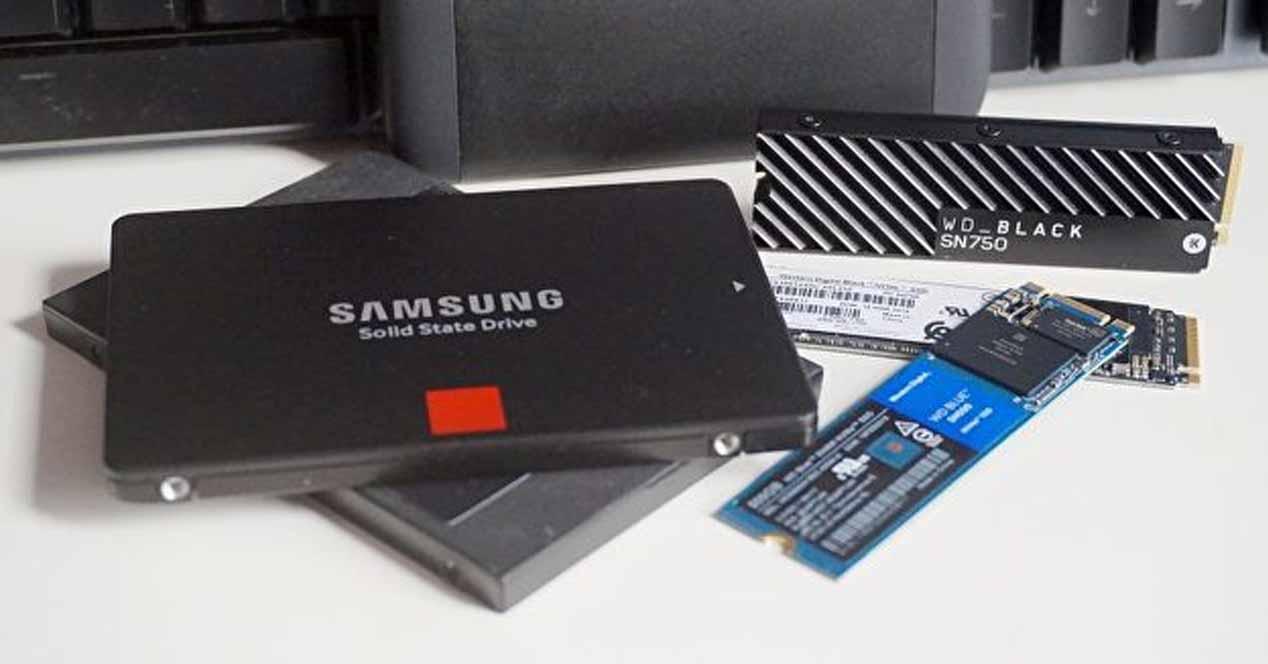In this article we therefore assume that you already have an SSD with SATA 3 interface, but your motherboard supports the installation of SSD in M.2 format with PCIe interface (either PCIe 3.0 or 4.0) NVMe, otherwise said, we would talk about an improvement without having to change anything other than the storage device, or the motherboard or any other component.
SATA SSD or PCIe NVMe, the choice depends on your budget
As you well know, SSDs with SATA 3 interface are currently having a soft moment. Precisely due to the arrival of more modern PCIe NVMe SSDs, their price has come down a lot lately, and 1TB models can already be bought for under $ 100 in many cases, and one can even find deals with 2 TB units for only 140 dollars. It’s because of this capacity / performance / price ratio that we almost always recommend these SSDs on a tight budget, but obviously a PCIe NVMe SSD device gives us much better performance.
Here you can see an example comparing a high performance SATA 3 SSD (Corsair Neutron XTi) with a PCIe 3.0 NVMe SSD (Transcend SSD 220S):
The increase in performance is obvious, and this example in terms of loading times of some games is just one of many we could put, as the performance of these devices is superior in literally everything except in its price. by Go as already we have commented.
So, is your current SSD worth changing?
When it comes to building a new PC from scratch, and as long as your budget allows, we recommend that you don’t hesitate and go for a PCIe NVMe SSD as performance is higher in everything. Now, if you already have a SATA 3 SSD in your system, and unless it is already in the final throes of its lifecycle and its performance has degraded too much, you will still have a good storage device that gives you great performance for whatever you do.
In essence, replacing a SATA 3 SSD with an NVMe won’t give you too much of a tangible difference – obviously there is a difference, but it’s not like when you have a mechanical drive and you upgrade to an SSD that it does. there is a huge difference – to justify the difference. worth the investment.
There is obviously a possibility that the SATA 3 SSD you currently have is already something old and therefore its capacity is not enough for what you need, in which case it is likely that you want to change SSDs. If this is your case, the choice will depend on your budget or rather what you want to spend and the need for storage you have; For example, if your current SSD has a capacity of 500 GB and is too small for you, naturally you will want to buy a unit of at least 1 TB; If you choose SATA 3 for less than $ 100, you already have more than decent devices, while if you want a PCIe NVMe SSD, you’ll have to spend a lot more money as a rule.
In other words: if you want to change SSDs because you need more space, it makes sense to invest a little more money and buy an NVMe PCIe SSD, but if your budget is a bit short, then a SATA 3 SSD is still perfectly valid and comes out much more profitable in terms of capacity for the price. If you are intending to switch your SATA 3 SSD to an NVMe SSD just for performance, unless you are an enthusiast looking to get the most performance out of your system, this is not something that does. will be worth it.









